‘Let It Be’ Director Michael Lindsay-Hogg Interview: Filming the Beatles and the Stones
by Harvey Kubernik
THE BEATLES: LET IT BE, exclusively on Disney+. © 2024 Apple Films Ltd.
As we prepare to view the long-anticipated return of the 1970 film of The Beatles, Let It Be, on Disney+ on May 8, 2024, we should acknowledge the work done by the film’s director, Michael Lindsay-Hogg. The film is now brought to light through its restoration and in the context of revelations brought forth in Peter Jackson’s multiple Emmy Award®-winning, deep-dive, The Beatles: Get Back. Released on Disney+ in 2021, the docuseries showcases the iconic foursome’s warmth and camaraderie, capturing a pivotal moment in music history.
Jackson himself was particularly affectionate in detailing the connection between Lindsay-Hogg’s film and his own in an interview with CNN’s Anderson Cooper.
Lindsay-Hogg, born May 5, 1940, in New York City, is the pioneering music video director who guided the landmark Ready, Steady, Go! music and dance television series during 1963-1966, and who filmed the Rolling Stones and their guests in Britain at a bigtop venue in Wembley, an event that was released as The Rolling Stones Rock and Roll Circus. That shoot took place in December 1968. Envisioned as a BBC special, the project was shelved, but in the intervening 28 years it was regarded as the Holy Grail of rock films, until it finally saw the light of release in 1996 through ABKCO Films.
Watch the “Dirty Mac,” featuring John Lennon, Keith Richards, Eric Clapton and others, in The Rolling Stones Rock and Roll Circus
Related: Our review of The Rolling Stones Rock and Roll Circus
Before capturing The Rock and Roll Circus on celluloid, Lindsay-Hogg had helmed many of the Rolling Stones’ promotional video clips, including “She’s a Rainbow,” “2000 Light Years From Home,” “Child of the Moon” and “Jumpin’ Jack Flash,” as well as the Beatles’ “Paperback Writer,” “Rain,” “Hey Jude” and “Revolution.”
He also directed specials for Simon and Garfunkel, Neil Young, Paul Simon and the Who.
“I started out as a child actor and fell in love with the theatre,” Lindsay-Hogg told me in an interview for my 2020 book, Docs That Rock, Music That Matters. “The first jobs I had were in Shakespeare on stage. I tried very much to bring some of those elements to Ready, Steady Go!”
RSG!—broadcast every Friday night starting on August 9, 1963, with a final taping taking place December 23, 1966—was conceived by Elkan Allan, then head of Rediffusion TV. Vicki Wickham assembled the talent and dancers and served as one of the producers. After 1964 the live show aired nationally on network. The program was recorded at the RSG! studio in Rediffusion’s headquarters in Kingsway, London.
RSG! gave a platform to some of the most successful recording artists of the ’60s, among them the Who, Otis Redding, the Animals, Gene Pitney, the Zombies, Sandie Shaw, the Beatles, Burt Bacharach, the Stones, the Temptations, Donovan, the Kinks, James Brown, the Fortunes and the Walker Brothers.
Initially, the musical guests on RSG! mimed to their pre-recorded tracks, but by late 1964 some artists performed live and eventually all acts did. The hosts/presenters were Keith Fordyce and Cathy McGowan. Early shows were introduced by singer Dusty Springfield.
“It was a black and white program,” explained Lindsay-Hogg. “A lot of the great comedies and dramas from the ’40s and ’50s were in black and white. In England, we had no color. I had no worries from the people above me. Elkan Allen was the creator and always encouraged me to go further. Very helpful. And I think people were stunned by the comparative substance of the rock ’n’ roll that was on television.
“The year 1963 was a revolution,” he continued. “It was the kids who had been children in World War II. The world was opening up for them. They could have long hair if they wanted to. There was the discovery of the [birth control] pill. And so a whole nation was open for young people and freedom.”
Lindsay-Hogg directed it, and tried new techniques like stop action and freeze frame while the band was on camera. “On the show, the visuals propelled the music,” he said.
“[Stones manager] Andrew Loog Oldham had some ideas about lighting and shots,” Lindsay-Hogg continued. “When the Stones did ‘Paint It, Black,’ we put camera effects on Mick [Jagger]’s face and made it darker and darker. We were broadcasting live. It felt dangerous and primitive.”
Watch the Stones on RSG in 1964
“With RSG! it was as much about the technique as the performer,” he added. “In the early RSG! stages I was always thinking about the performer and somehow marrying the technique to them. If the performer is Mick Jagger or John Lennon you don’t want to get in the way too much.” [A 2020 book on Ready, Steady Go! is available here.]
Lindsay-Hogg entered the world of rock ’n’ roll on television when it was still in its infancy. “There was Dick Clark‘s American Bandstand, Jack Good [the wonderful producer and director of Shindig!] and Hullabaloo. Did we know what was gonna happen to rock ’n’ roll, that it was ultimately going to blast through the roof? We thought it would. We thought, ‘Let’s see what can happen with the visual presentation of rock ’n’ roll.’
“When I worked with the Beatles and the Rolling Stones, they were really making the first videos that tried to take the form a little further,” he concluded. “Following me was a long line of very interesting visual attempts with music.”
Author and music journalist Harvey Kubernik’s books are available in the U.S. here and in the U.K. here.
Watch the official trailer of the Peter Jackson film, The Beatles: Get Back, based on footage shot by Lindsay-Hogg
Jackson’s The Beatles: Get Back is available on DVD and Blu-ray in the U.S. here and in the U.K. here.

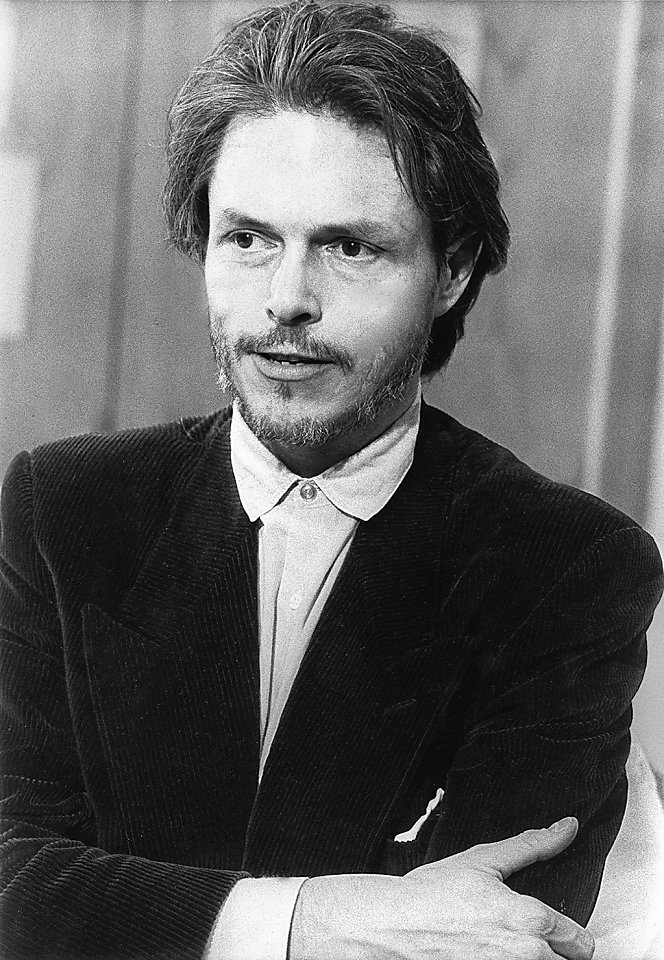
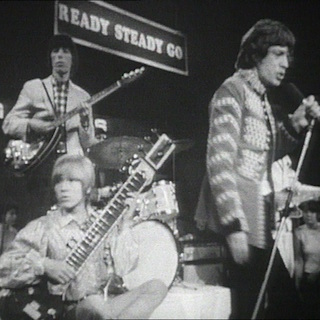
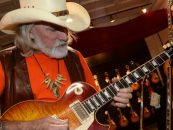
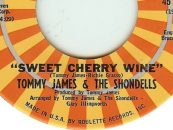

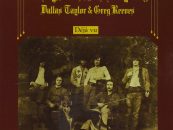

2 Comments so far
Jump into a conversationWhile the television format for presenting musical groups was, essentially, set. The 3-camera TV studio recording technique offered a much more comprehensive and interesting presentation than did Lindsay-Hoggs treatment of the early music videos, such as the Beatles one listed here. With that said, one has to wonder what Lindsay-Hogg’s actual contribution to the music format really was, as he appeared to be just in the right place at the right time, doing first what was already existing as a presentation, and then putting bands like the Beatles, in a pretty, but unrealistic setting for a musical presentation, which, at that time, must have somehow seemed creative, but, in reality, was really pretty unimaginative, considering how exciting the Beatles themselves came off performing on TV shows. It appears that when it was time to make these types of promo videos, those responsible didn’t really have much of an idea about it themselves, so they simply turned to a guy who was “directing” on music shows, who himself didn’t seem to have much of an idea what to do when taken out of the TV studio environment.
But with regard to Lindsay-Hogg’s “direction” of the “Let It Be” footage (and now of the “Get Back” series, his interaction and involvement with the Beatles, as he tries to get his ideas accepted, plays incredibly well in the “Get Back” series, as it at least lends some sort of dramatic element (other than Harrison’s obvious unhappiness and dissatisfaction) to this series as part of the whole narrative, of trying to get this “show” done that no one seems to really have a clue about doing, ore even why they’re doing it. But as far as the original “Let It Be” film, Lindsay-Hogg, to my memory, was not a player, or at least not as much of one, in it, as it primarily focused on the Beatles in rehearsal, and putting together a more finished LP product than we could have perceived might even be possible, if viewers had only seen the hapless attempts at getting songs together that the Beatles display in “Get Back.” So, as far as the negative rap that Lindsay-Hogg has received about what the editorial choices in “Let It Be” presented about the Beatles, seeing now what Lindsay-Hogg was having to deal with, in trying to motivate the Beatles, at this point in their career, for a show that no one seemed to care about, probably left a starkly bad taste in Lindsay-Hoggs mouth about the whole experience. It’s no real surprise then that the film cuts the director used in “Let It Be” portrayed the Beatles as a ship going down. If you want to get down to it, he actually makes them look pretty good compared to what you see of their constant non-focused jerking around, in “Get Back.” The only real difference is that Jackson now shows us that, aside from Harrison, there wasn’t really all that much tension and distaste for one another between the members.
hi Harvey,
I’m a big fan of both Michael and the beatles so this was a great watch/read. Keep up the excellent work.
Best wishes,
Jack